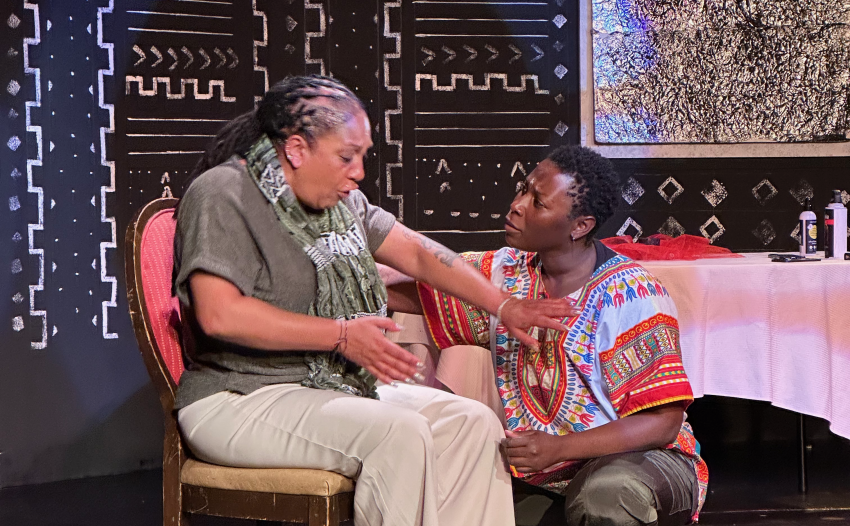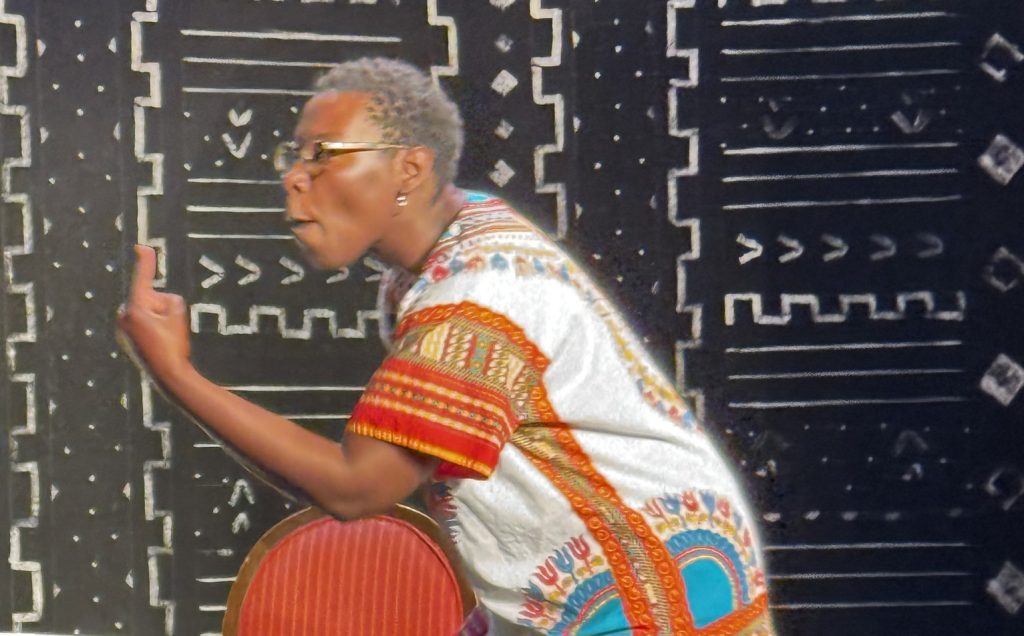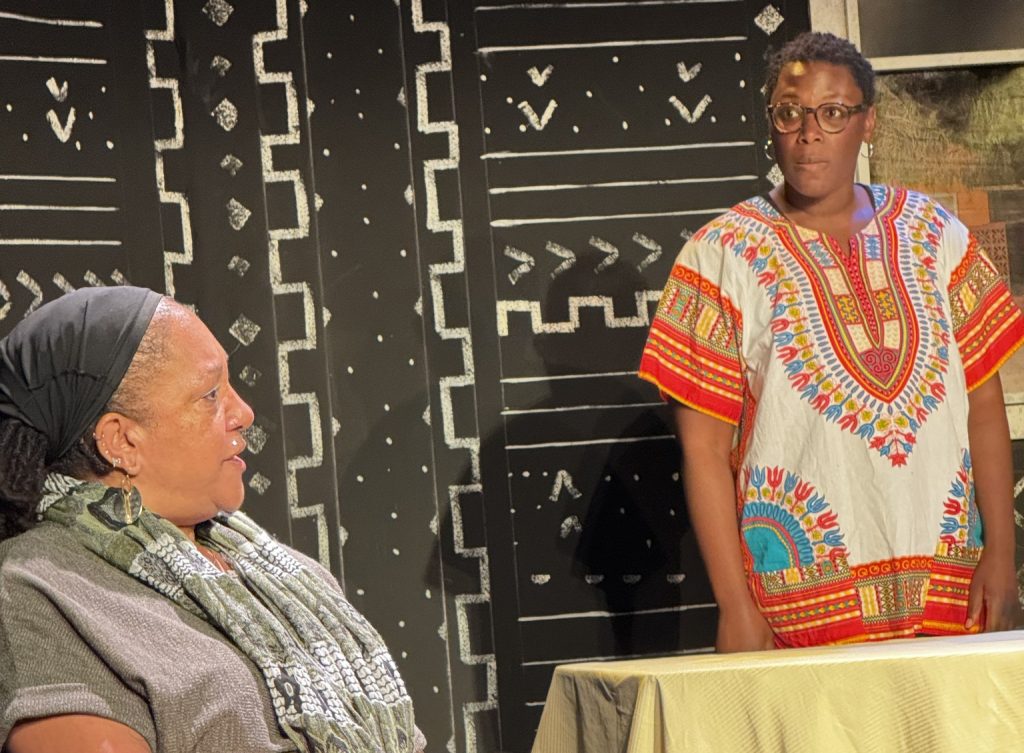
“Government Housing” Invokes AfroFuturism, Reveals Hard Truths—at LBP
Ayodele Nzinga Transforms Realism to Fantasy, Opening Our Eyes
by Kheven Lee LaGrone
According to Marvin X, a leading playwright of the movement, “Black theater was the mother of the Black Power Movement.” He explained that, “In America during the 60s, youth received revolutionary consciousness in the Black Arts Movement (BAM), especially the Black Theatre, then joined such political movements as the Black Panthers and Black Muslims.”
Dr. Ayodele Nzinga’s semi-autobiographical play “Government Housing” is rooted in the revolutionary Black Arts Movement. Dr. Nzinga was a student of Marvin X and the Lower Bottom Playaz are based in the Black Arts Movement District. As a writer, she uses fantasy to liberate us and find redemption. As a director, she is revolutionary, creative and intense.
“Government Housing” opens with dancing and original music. Housing Worker (Cat Brooks) shows up unannounced at Dele’s (Jeunée Simon) Section 8 duplex for a housing inspection. It’s the third time. Dele snaps. She ties up Housing Worker in her living room.
Before that third inspection, Housing Worker has been using her authority to harass Dele. Housing Worker intentionally sent three notices of her visits to the wrong address.

Dele often gives Housing Worker reasons to cite and harass her. Dele openly breaks housing rules she believes are obstacles to her dreams. The City has a rule against planting in front of the window. Dele plants flowers there anyway.
It’s the classic struggle between the powerless and a bureaucracy. Feeling trapped, Dele tries to get Housing Worker to see her as a person. But Housing Worker works for the bureaucracy. She is burned-out and deluded. She tells Dele:
I don’t see anything when I look at you. You’re all alike. You are a number on my way to retirement . . .You’re a percentage, a data pint, a stereotypical statistic. You are the usual story—picked to go nowhere—and that’s where you are going.
The story morphs from realism to Afro-futuristic fantasy. Housing Worker transforms, tries to escape her trauma of white supremacy, misogyny, and chattel slavery. She wants to escape to “Black Eden.” Dele transforms into the gatekeeper to “Black Eden.” Dele becomes the healer, spiritual guide through time travel and ancestor worship. Perhaps the story is really about Housing Worker’s journey to redemption.
Ironically, those fantasy parts of the play can be very confusing. I needed my own guide.
From dancers to actors, the passion for the play is infectious. Cat Brooks is convincing as a burned-out Housing Worker with no dreams. Jeunée Simon is convincing as a Dele who goes from victim to healer.
While watching the play, a question nagged me. Housing Worker criticized Dele’s mothering of her seven children; she criticized Dele’s selection of men. What was Dele’s relationship to the children’s father? As a government worker, why doesn’t she search for the children’s father and demand child support? That could help Dele.
But “Government Housing” is experimental community theater at its best. It’s true to the spirit of the Black Arts Movement.

“Government Housing” –written and directed by Dr. Ayodele Nzinga, by Lower Bottom Playaz, at BAM House (Black Arts Movement), 1540 Broadway, Oakland 94612. Info: lowerbottomplayaz.com – to May 4, 2025.
Cast: Cat Brooks and Jeunée Simon.
Banner photo: Cat Brooks and Jeunée Simon